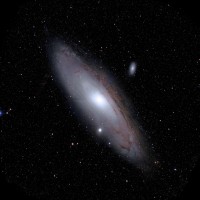Space images shed light on unknown Universe

Astronomers around the world are poised to discover billions of new stars, galaxies and solar system objects, thanks to newly released data from a major survey of the skies involving University of Edinburgh researchers.
Scientists are poised to make fresh discoveries about the Universe, thanks to newly released data from a major astronomy survey. Results from a four-year project to capture digital images of the sky should enable astronomers around the world to discover billions of new stars, galaxies and solar system objects. The project, involving Edinburgh scientists, will also enable researchers to study the farthest reaches of the universe and gain insights into elusive dark energy and dark matter.
Images in the study have been taken using a 1.8-metre telescope at the summit of Haleakalā on Maui, Hawaii. The technology is known as the Panoramic Survey Telescope & Rapid Response System (Pan-STARRS). It captured images of patches of sky - each about 36 times the area of the moon - every 30 seconds for four years. The telescope’s regular imaging means that fast moving objects and exploding stars can be tracked across nearly the whole sky. Images from the project, being released by the Space Telescope Science Institute and the University of Hawaii, can be analysed to identify and catalogue astronomical objects. Data from the survey has been shared in advance with astronomers in the team. Already, this has led to discovery of hundreds of supernovae – exploding stars that give off massive amounts of energy as they die. It has enabled scientists to see individual stars in nearby galaxies, and to discover giant streams of stars in our own Milky Way. The survey dataset is being released in two stages. The first gives an average value for the position, brightness, and colours of all the recorded objects in the sky at a particular point in time.
A further release next year will provide a catalogue of information, and allow access to individual images for each time frame. The database will include information on individual snapshots of a given region of sky.
The Pan-STARRS project was undertaken by an international collaboration including the Universities of Edinburgh and Durham, and Queen’s University Belfast.It was supported by NASA and the National Science Foundation.
“This rapid, repeating survey has enabled us to discover very rare events in which a massive black hole shreds a passing star, which otherwise would have been impossible to spot. Releasing the data will now enable astronomers round the world to study huge numbers of distant stars and galaxies in ways we can't even guess." said Professor Andy Lawrence, of the University’s School of Physics and Astronomy

